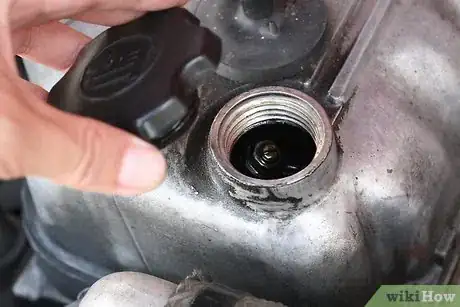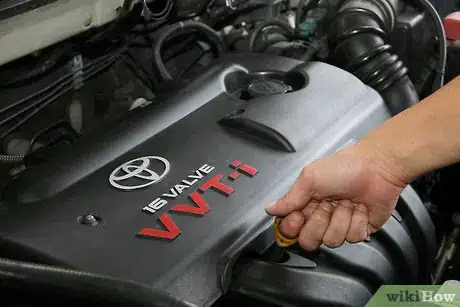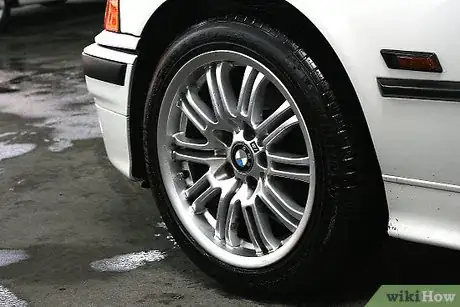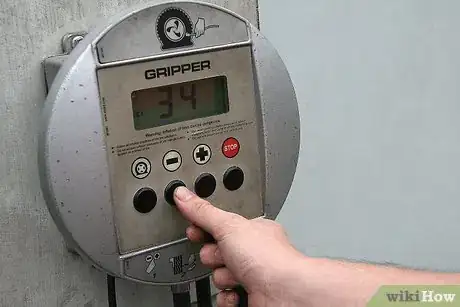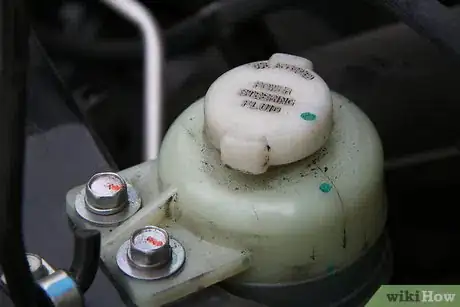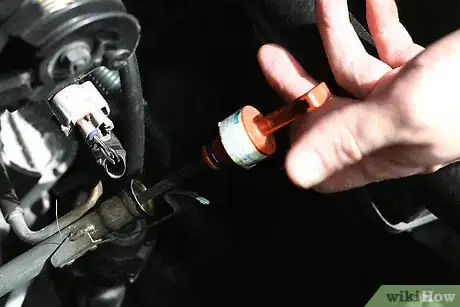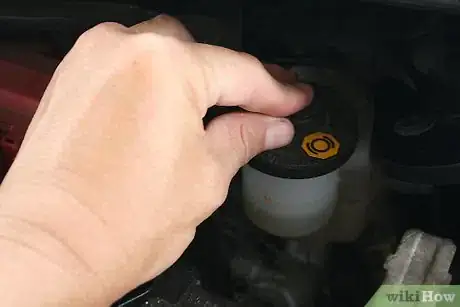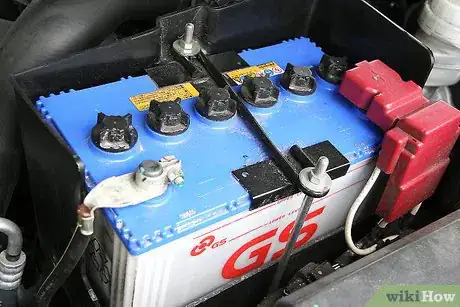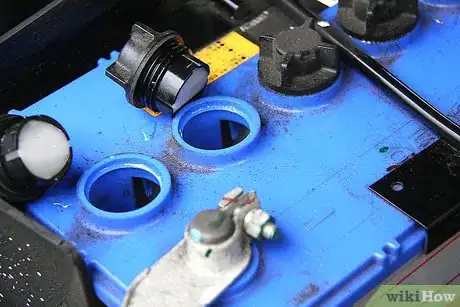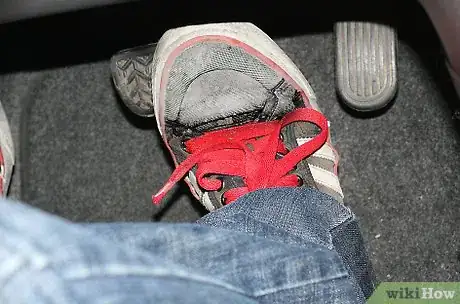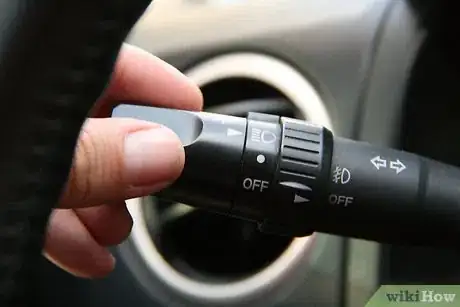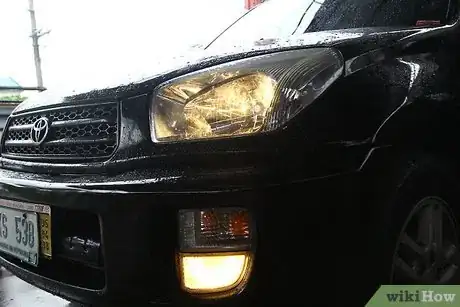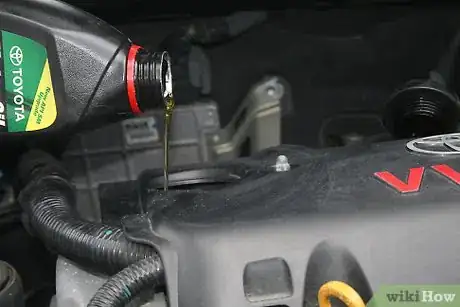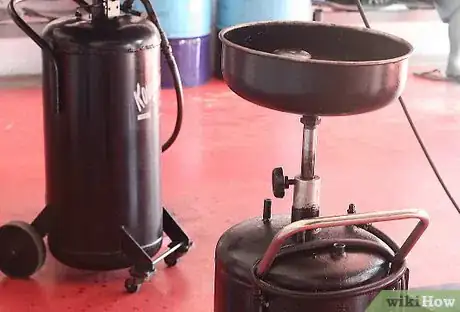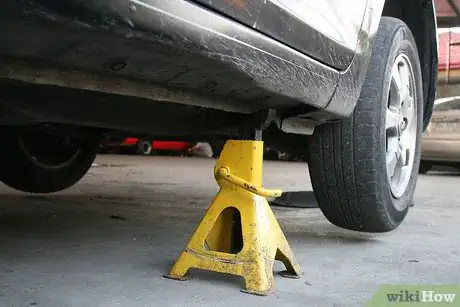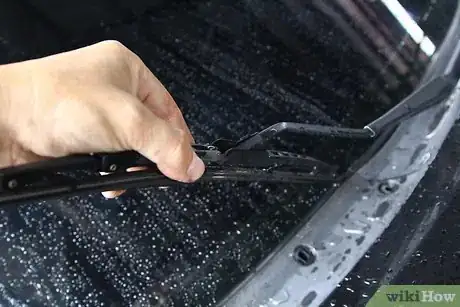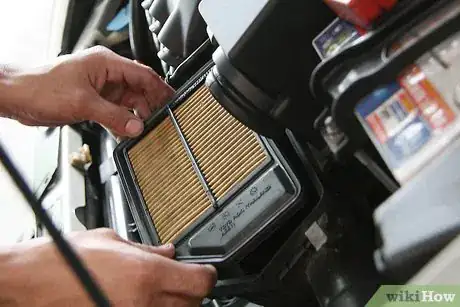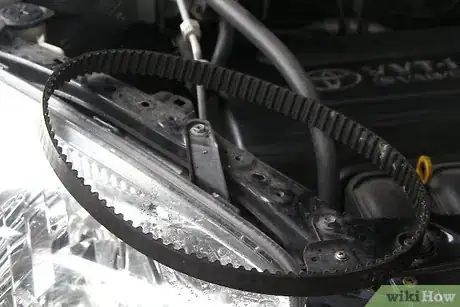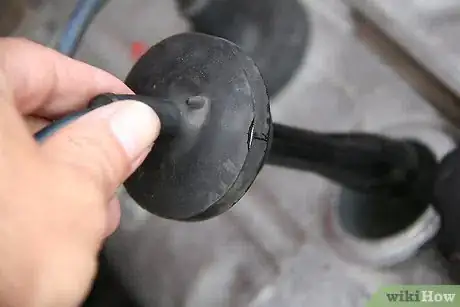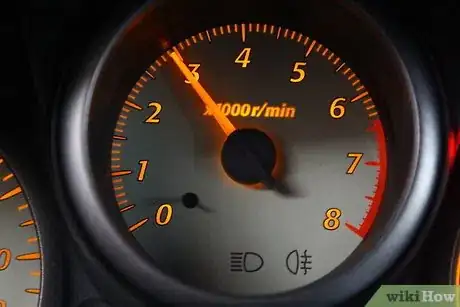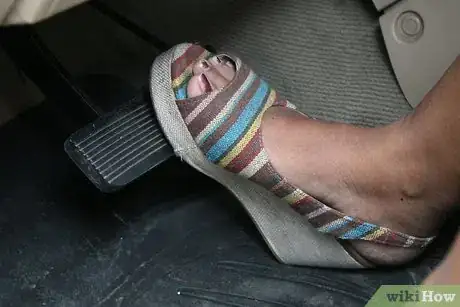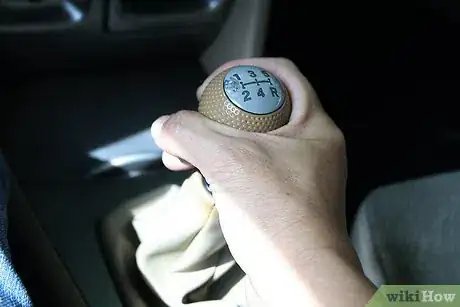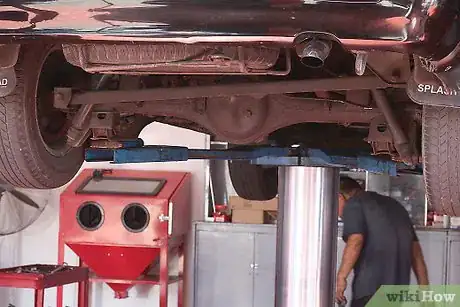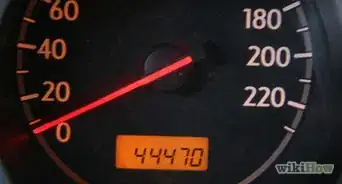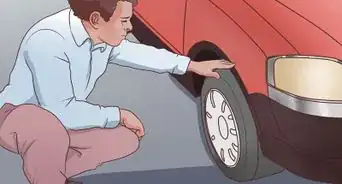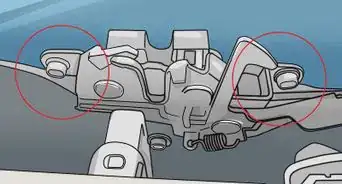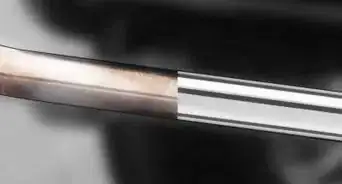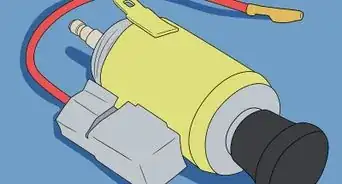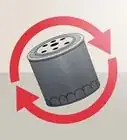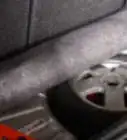This article was co-authored by Jason Shackelford. Jason Shackelford is the Owner of Stingray Auto Repair, a family owned and operated auto repair shop with locations in Seattle and Redmond, Washington. He has over 24 years of experience in auto repair and services, and every single technician on Jason’s team has more than 10 years of experience.
There are 26 references cited in this article, which can be found at the bottom of the page.
wikiHow marks an article as reader-approved once it receives enough positive feedback. This article has 13 testimonials from our readers, earning it our reader-approved status.
This article has been viewed 734,418 times.
You don't need to be a mechanic, or even a car enthusiast, to perform basic maintenance on your car. You can save money and hassle by learning a few easy-to-remember steps and fixes to keep your car in good working order year-round. No more emergency calls to the mechanic on the weekend. No more desperate roadside AAA service. Perform regular inspections and tune-ups and your car will be reliable, safe, and road-ready.
Steps
Performing a Basic Inspection
-
1Check the oil and top it off if necessary. One of the most simple ways you can extend the life or your automobile without paying for costly tune-ups is to check your oil level regularly and add more oil, if it's low. It only takes a minute or two to check the level, and the dipstick included in your engine block makes the job a snap for even the novice.[1]
- Find the cap on your engine, usually labeled "Oil" and find the dipstick that should be close by on the engine block. Do this when the engine's had a chance to cool down, or do it first thing in the morning to get the most accurate reading. Remove the dipstick and wipe off the oil with a paper towel or rag.
- Examine the rag. Is the oil especially black? Do you notice any sediment, or chunky-looking oil? If so, you're probably in need of an oil change. Put the dipstick back and remove it once more to check the level. Notches on the dipstick should tell you how full the compartment should be.[2]
- If you're low, remove the cap and add a small amount of a high-grade motor oil appropriate for your type of engine. Ask at the auto parts store if you're unsure about what kind of oil to use. Use a funnel to avoid spillage, and recheck the level once you've topped it off.
-
2Inspect the tires. Nothing's worse than a busted tire at the wrong moment, when you're running late to work in the rain. No thanks. Regularly inspecting tires and rotating them can help to avoid this irritation.[3] [4] Check both the air pressure in your tires, and check the tread for wear and replace the tires if you need to.[5]
- You can use a pressure gauge at most gas stations, or you can buy one for a few dollars at an auto parts store and keep it in your glove box for regular checks. Open the driver's side door and look at the sticker on the doorjamb — this will tell you the recommended pressure for your tires. There is also a number printed on your tires, but this is the maximum PSI for your tires, which is generally more PSI than you want or need. Don't over-inflate. Keeping your tires inflated to the proper specifications improves gas mileage and handling.[6]
Advertisement -
3Check other fluid levels. Find the windshield washer fluid compartment, transmission fluid, brake fluid, as well as the anti-freeze compartment to make sure they're both full and clean, and add more fluid if necessary.[7] This isn't something you'll need to check every week, but doing it semi-regularly will ensure that your car is in good working order.
- The transmission fluid dipstick should be easily identified in your owner's manual. Sometimes it is the only other dipstick in an automatic transmission vehicle, but some vehicles have dipsticks for power steering and coolant as well. . Remove it, wipe it off, and read the level. It should be mostly clear, with a kind of red color to it. You'll only need to change transmission fluid every 100,000 miles (160,000 km) or so. Some manufacturers recommend 60,000 or even 30,000 for transmission fluid replacement — always go with the manufacturers recommendation.[8]
- The brake fluid is housed in a white plastic reservoir in the engine compartment, labeled "brake fluid." This should only ever decrease slightly, unless you've got a leak in your line somewhere, which means you need to take it into be serviced immediately, or check the lines yourself.[9]
- Radiator fluid or coolant needs to be checked when the engine is stone cold. When the engine heats, even a little, scalding radiator fluid will literally shoot out of the cap when you remove it. Be extremely careful. If you start noticing a strange, sickly-sweet smell that comes through your air-conditioner ducts as you're driving, you might have a coolant leak, causing glycol to drip onto the engine compartment and burn. If your levels are low, this could be the cause.[10] Radiator fluid should often be changed according to manufactures instructions often every every 30,000 miles.[11]
- Power steering fluid and windshield washer fluid are both housed in the engine compartment in plastic reservoirs, though some are built into the pump itself as well. Power-steering fluid will often have a mark for a cold engine and a hot engine, so look at the right level to check, adding more if necessary.[12] Wiper-fluid isn't essential to the car's life, but you can extend the life of your wipers by making sure it's full.[13]
-
4Inspect the battery. Inspect your car's battery for corrosion and other signs of wear.[14] The battery terminals can become caked with fluid from the battery's components, which can gum up the contact points and cause trouble when you're trying to start it up. If you're noticing the car doesn't start up as crisply as it used to, inspect these contact points.[15]
- Clean them, if necessary, with baking soda and an old toothbrush. You can also use a tiny amount of soda pop to cut through the corrosion and clean them up. Loosen the bolts that secure them, if necessary, and clear out any build-up.[16]
-
5Test your brakes. Periodically, when you're driving around and the coast is clear, pump your brakes hard at a slow speed to get a feel for how they react. Do they initiate right away? Does the ABS engage at the proper moment? Do you notice any grinding, squeaking, or unevenness in the action? Any abnormality could be a sign of worn-out brake pads, which is a good indication that you've got some tune-ups to make.[17] Most auto parts stores and some repair shops will usually test your battery at no charge.[18]
-
6Check your lights.[19] It's a good idea to regularly perform light checks to make sure all your lights are functioning properly and that nothing is burned out.[20] Have a helper turn on the turn signals and pump the brakes while parked to check for burn-outs or misalignments.
- To check the brights, you can park aimed at a wall and flash them. They'll sometimes need to be aligned to make sure they're illuminating the right amount of road and giving you the vision necessary for safe night driving.[21]
Performing Routine Tune-Ups
-
1Change the oil every 3,000 miles. To keep your engine functioning to its maximum potential, you need to drain the old oil completely and fill with fresh oil appropriate to the kind of engine in your car.[22] You'll also want to change the oil filter, which usually has a life of about 15,000 miles (24,000 km). While you're doing an oil change, though, is usually a good opportunity to change the filter, which increases the life of your vehicle.[23]
- Changing the oil is an intermediate-level project. While there's nothing difficult about the task itself, you've got to have the space and materials necessary (you'll need fresh oil, an oil pan, and jack-stands or ramps). It's relatively cheap and quick to take it into the shop to have it done, especially if you live in the city and don't have a good space to tune up your car yourself.
- The service interval of 3,000 miles (5,000 km) can vary from vehicle to vehicle. Always go with the manufacturers recommendation; however, it does not hurt the vehicle in any way to change oil more often.[24]
-
2Rotate your tires and replace them, if necessary. To even out the wear on your tires and get more life out of them, it's helpful to rotate them periodically, using the correct crossing pattern. Depending on the kind of treat on your tires, you might need to switch the side, as well as the positioning. You'll need several jack stands if you want to rotate your tires yourself, or you can take it in and have them rotated on a hydraulic lift at the shop quickly and affordably.[25]
-
3Replace the windshield wipers, if necessary.[26] If you notice the blade of your wipers coming loose, cracking, or you notice gaps in the coverage when they're operating, remove the old windshield wipers and replace them with new ones. At the auto parts store, you can usually consult the manual in the aisle to find out the size you need for your car, or you can bring in the old ones for a quick replacement.
-
4Replace the car’s air filter. The air filter unit should be on top of the engine, under a bulky, rounded cover, usually made of metal or plastic. Removing the air filter and cleaning it thoroughly (even just gently blowing some compressed air through it and wiping it off) can help extend the life of your engine considerably. Keep in mind that some air filter materials are very soft and fragile. A hard blast of compressed air can blow a hole through some air filters and prevent them from filtering any air at all.[27]
- If your air filter is not on top of the engine, it may be located in an air box with duct work that travels from the front of the vehicle to the box then to the throttle body. Some air cleaners are not even noticeable from under the hood and must be serviced from under the car.
-
5Inspect and change belts if necessary. Sometimes called the "serpentine belt," a long rubber belt snakes through the alternator, power-steering pump, and other engine components, and a power-steering belt operates in a similar fashion. The alignment and installation of the belts will vary widely, depending on your engine, but if you notice a high-pitched squeaking noise when you start up or when you turn, inspect the belts for wear and replace them. The belt only costs a few dollars, and a diagram of the installation is generally included in the engine compartment.[28]
-
6Replace the car’s spark plugs. The spark plugs of the car should also be checked and replaced when needed. These spark plugs are vital in the vehicle’s fuel combustion mechanism so it is important to maintain these in good working condition. Any failure of the spark plugs might cause the engine to stall so you should prevent this from happening by regular replacement.[29]
Maximizing the Life of Your Vehicle
-
1Drive less. Simply put, the more cold starts you put your car through on a daily basis, the harder it is on the engine. If you want to extend the life of your car as much as possible, only use your car when absolutely necessary and avoid lots of stops and starts.[30]
- Avoid short trips that you might consolidate into longer ones. Instead of running to one store in the morning when you need dog food and heading to the grocery store later in the day when you need to get stuff for dinner, consolidate both trips and plan out your driving more effectively.
- If you're going to be driving less for an extended period of time, consider wintering your car somewhere safe and getting around some other way.
-
2Accelerate slowly. Putting strain on the transmission by going from a dead start to fast-as-possible is a good way to ruin your engine in the long run. Slow down. Even if you're in a hurry, learn to accelerate smoothly and gently, working up to your intended speed. Even if you're driving an automatic transmission, pretend you're shifting gears at a relaxed pace to learn to accelerate properly.
-
3Go easy on your brakes. Manual transmissions can be shifted to a lower gear and, thereby, use the engine to slow the car, while drivers of cars with automatic transmissions need to be more careful about decelerating strongly at the last moment. Going straight from accelerating to braking puts a lot of wear on your brake pads, regardless of the kind of transmission you have, so it's important to anticipate your stops and coast into them.[31]
- Never accelerate toward red lights. Take your foot off the gas and maintain your speed in preparation for a stop.
-
4Shift smoothly in a manual transmission vehicle.[32] Changing out the clutch is one of the most difficult jobs, and one of the most expensive things to pay for. Hard shifts in which you accidentally grind the gears, or revving the RPMs too much will put strain on the transmission, which can be costly to repair or replace. Practice shifting smoothly, especially in the low gears.
-
5Use the best gas for your car. Use the octane specified in your owner's manual and usually written on the inside of the fuel door. Avoid fueling at gas stations that have just been delivered a load of gas. If you see a filling station receiving a tanker load of gas, go elsewhere. When the new gas is dumped into the tank, sediment and water on the bottom of the tank tends to get distributed throughout the tank. Even though there are filters at the pump and in your car, these do not catch everything and will clog over time. It is best to avoid fueling at these times. If there are not nearby stations, take a break, go to the bathroom, walk around and wait for 15 or 20 minutes for the gas to settle in the underground tank. It is also best to pump your gas slowly, as vapors escape faster when the pump runs full speed.
-
6Always fix problems as they arise. When an issue comes up, there's no time like the present to get out in the driveway and start tuning things up. Driving around with a squeaky alternator belt for weeks at a time is both bad form for your engine and for your neighbors' sanity.
Expert Q&A
-
QuestionHow do you inspect a car paint job?
 Ed BeeryEd Beery is an Automotive Specialist and the Owner of InTechgrity Automotive Excellence based in Denver, Colorado. With more than eight years of experience, he specializes in providing maintenance and repair services for both individuals and companies. Ed and the InTechgrity Automotive Excellence Team are approved by the American Automobile Association (AAA) for repairs and are Automotive Service Excellence (ASE) certified.
Ed BeeryEd Beery is an Automotive Specialist and the Owner of InTechgrity Automotive Excellence based in Denver, Colorado. With more than eight years of experience, he specializes in providing maintenance and repair services for both individuals and companies. Ed and the InTechgrity Automotive Excellence Team are approved by the American Automobile Association (AAA) for repairs and are Automotive Service Excellence (ASE) certified.
Automotive Specialist Look for dents, scrapes, wear, and missing paint. Also, keep an eye out for stubborn spots that feel like small bumps to the touch—these are the beginning of rust. Thankfully, you can polish them out with rubbing compound or automotive wax.
Look for dents, scrapes, wear, and missing paint. Also, keep an eye out for stubborn spots that feel like small bumps to the touch—these are the beginning of rust. Thankfully, you can polish them out with rubbing compound or automotive wax. -
QuestionWhat are some things that should be inspected when looking at tires?
 Ed BeeryEd Beery is an Automotive Specialist and the Owner of InTechgrity Automotive Excellence based in Denver, Colorado. With more than eight years of experience, he specializes in providing maintenance and repair services for both individuals and companies. Ed and the InTechgrity Automotive Excellence Team are approved by the American Automobile Association (AAA) for repairs and are Automotive Service Excellence (ASE) certified.
Ed BeeryEd Beery is an Automotive Specialist and the Owner of InTechgrity Automotive Excellence based in Denver, Colorado. With more than eight years of experience, he specializes in providing maintenance and repair services for both individuals and companies. Ed and the InTechgrity Automotive Excellence Team are approved by the American Automobile Association (AAA) for repairs and are Automotive Service Excellence (ASE) certified.
Automotive Specialist Always check for even wear, as uneven wear can indicate suspension problems. Also, take a look at your tire pressure, since uneven pressure can lead to wear problems and affect mileage. It also helps to inspect your lug nuts and spare tire. Make sure you have your jack, handle, lug wrench, and chocks accessible, too.
Always check for even wear, as uneven wear can indicate suspension problems. Also, take a look at your tire pressure, since uneven pressure can lead to wear problems and affect mileage. It also helps to inspect your lug nuts and spare tire. Make sure you have your jack, handle, lug wrench, and chocks accessible, too. -
QuestionCan I change my spark plugs myself?
 Ed BeeryEd Beery is an Automotive Specialist and the Owner of InTechgrity Automotive Excellence based in Denver, Colorado. With more than eight years of experience, he specializes in providing maintenance and repair services for both individuals and companies. Ed and the InTechgrity Automotive Excellence Team are approved by the American Automobile Association (AAA) for repairs and are Automotive Service Excellence (ASE) certified.
Ed BeeryEd Beery is an Automotive Specialist and the Owner of InTechgrity Automotive Excellence based in Denver, Colorado. With more than eight years of experience, he specializes in providing maintenance and repair services for both individuals and companies. Ed and the InTechgrity Automotive Excellence Team are approved by the American Automobile Association (AAA) for repairs and are Automotive Service Excellence (ASE) certified.
Automotive Specialist It depends on your car. Some spark plugs can be very difficult to change and may require professional service.
It depends on your car. Some spark plugs can be very difficult to change and may require professional service.
Warnings
- It's always better to pay to get the car checked out at the shop and get your problems diagnosed than to fix problems you've created. Always double-check your owner's manual before attempting any tune-up work yourself.⧼thumbs_response⧽
References
- ↑ https://www.consumerreports.org/car-repair-maintenance/how-to-check-car-engine-oil/
- ↑ http://lifehacker.com/the-preventative-maintenance-you-need-to-do-on-your-car-1394196018
- ↑ Ed Beery. Automotive Specialist. Expert Interview. 19 November 2021.
- ↑ https://www.idrivesafely.com/defensive-driving/trending/routine-vehicle-maintenance-101-what-you-should-know
- ↑ http://www.progressive.com/vehicle-resources/car-maintenance/
- ↑ https://www.cartalk.com/content/service-your-car-13
- ↑ Ed Beery. Automotive Specialist. Expert Interview. 19 November 2021.
- ↑ https://www.cartalk.com/content/service-your-car-14
- ↑ https://www.cars.com/articles/how-often-do-i-need-to-change-my-brake-fluid-1420680336417/
- ↑ https://www.cars.com/articles/how-often-should-i-change-engine-coolant-1420680853669/
- ↑ Jason Shackelford. Auto Technician. Expert Interview. 11 June 2019.
- ↑ https://www.liveabout.com/checking-your-power-steering-fluid-level-281725
- ↑ https://www.dummies.com/home-garden/car-repair/maintaining-your-wipers-and-washer-fluid/
- ↑ Ed Beery. Automotive Specialist. Expert Interview. 19 November 2021.
- ↑ https://www.dummies.com/home-garden/car-repair/how-to-check-your-car-battery/
- ↑ https://www.youtube.com/watch?v=Sn7BHBGY5xQ
- ↑ https://www.dummies.com/home-garden/car-repair/brakes-bearings/how-to-check-disc-brakes/
- ↑ Jason Shackelford. Auto Technician. Expert Interview. 11 June 2019.
- ↑ https://www.liveabout.com/test-your-brake-lights-alone-281692
- ↑ Ed Beery. Automotive Specialist. Expert Interview. 19 November 2021.
- ↑ https://www.popularmechanics.com/cars/a257/how-to-adjust-lights/
- ↑ Ed Beery. Automotive Specialist. Expert Interview. 19 November 2021.
- ↑ http://www.dmv.org/how-to-guides/basic-car-care.php
- ↑ Ed Beery. Automotive Specialist. Expert Interview. 19 November 2021.
- ↑ https://www.carbibles.com/car-maintenance-tips/
- ↑ https://www.artofmanliness.com/articles/replace-wiper-blades/
- ↑ https://www.artofmanliness.com/articles/how-to-change-your-cars-air-filter/
- ↑ https://www.familyhandyman.com/automotive/changing-a-car-serpentine-belt/
- ↑ https://www.familyhandyman.com/automotive/car-maintenance/how-to-replace-spark-plugs/
- ↑ https://www.cartalk.com/content/best-ways-keep-your-car-running
- ↑ https://carfromjapan.com/article/car-maintenance/how-to-take-care-of-a-car-brake/
- ↑ https://jalopnik.com/how-to-drive-a-stick-shift-in-ten-easy-steps-5230172
About This Article
To perform a basic tune-up on your car, start by changing the oil every 3,000 miles to ensure top engine performance. Next, inspect your tires regularly and have them rotated to reduce uneven wear and extend their lifespan. To help your car run smoothly, check the brake, windshield washer, and transmission fluids frequently and top them up when necessary. If you notice your wipers are cracked or not working properly, replace them with new ones, which you can buy at the auto store. For tips on how to extend the life of your vehicle, including why you should accelerate slowly and use the best gas for your car, read on!
